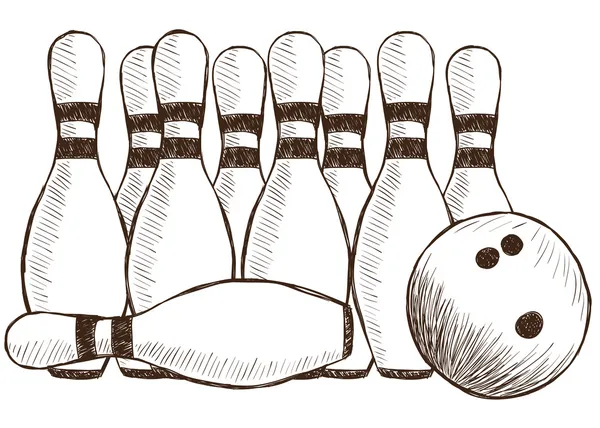
The ratio of centerline oil concentration to side oil concentration (the oil ratio) can exceed 10-to-1 for THSs but is restricted to 3-to-1 or less for sport shots. In the more challenging sport patterns used in tournaments and professional-level matches, a "flat" oil pattern-one with oil distributed more evenly from side to side-provides little assistance in guiding the ball toward the pocket, and is less forgiving with regard to off-target shots. As illustrated, a typical house pattern (or THS, typical house shot) has drier outside portions that give bowling balls more friction to hook (curve) into the pocket, but heavier oil concentrations surrounding the centerline so that balls slide directly toward the pocket with less hooking. Modern bowling lanes have oil patterns designed not only to shield the lanes from damage from bowling ball impacts, but to provide bowlers with different levels of challenge in achieving strikes. Simplified sport pattern: a "flatter" (more even) distribution of oil across the lane presents a greater challenge to hit the pocket. Ten-pin, or less commonly big-ball, is prepended in the English-speaking world to distinguish it from other bowling types such as bowls, candlepin, duckpin and five-pin.įacilities and equipment Lanes Ten-pin bowling is often simply referred to as bowling.
#Bowling with a small ball and straight pins professional#
Following substantial declines since the 1980s in both professional tournament television ratings and amateur league participation, bowling centers have increasingly expanded to become diverse entertainment centers. People approach modern ten-pin bowling as either a demanding precision sport or as a simple recreational pastime. After the development of automated mechanical pinsetters, the sport enjoyed a "golden age" in the mid twentieth century.
Ten-pin bowling arose in the early 1800s as an alternative to nine-pin bowling, with truly standardized regulations not being agreed on until nearly the end of that century. Especially when coupled with technological developments in ball design since the early 1990s, easier oil patterns common for league bowling enable many league bowlers to achieve scores rivaling those of professional bowlers who must bowl on more difficult patterns-a development that has caused substantial controversy. The oil is applied in different lengths and layout patterns, especially in professional and tournament play, to add complexity and regulate challenge in the sport. Oil is applied to approximately the first two-thirds of the lane's length to allow a "skid" area for the ball before it encounters friction and hooks. The lane's long and narrow shape limits straight-line ball paths to angles that are smaller than optimum angles for achieving strikes accordingly, bowlers impart side rotation to hook (curve) the ball into the pins to increase the likelihood of striking. The 41.5-inch-wide (105 cm), 60-foot-long (18 m) lane is bordered along its length by gutters ( channels) that collect errant balls.

The objective is to knock down all ten pins on the first roll of the ball (a strike), or failing that, on the second roll (a spare).Īn approximately 15 feet (5 m) long approach area used by the bowler to impart speed and apply rotation to the ball ends in a foul line. Ten-pin bowling is a type of bowling in which a bowler rolls a bowling ball down a wood or synthetic lane toward ten pins positioned evenly in four rows in an equilateral triangle. Ball contacts the 1, 3, 5, and 9 pins (sequentially tinted red) to achieve a strike.


 0 kommentar(er)
0 kommentar(er)
